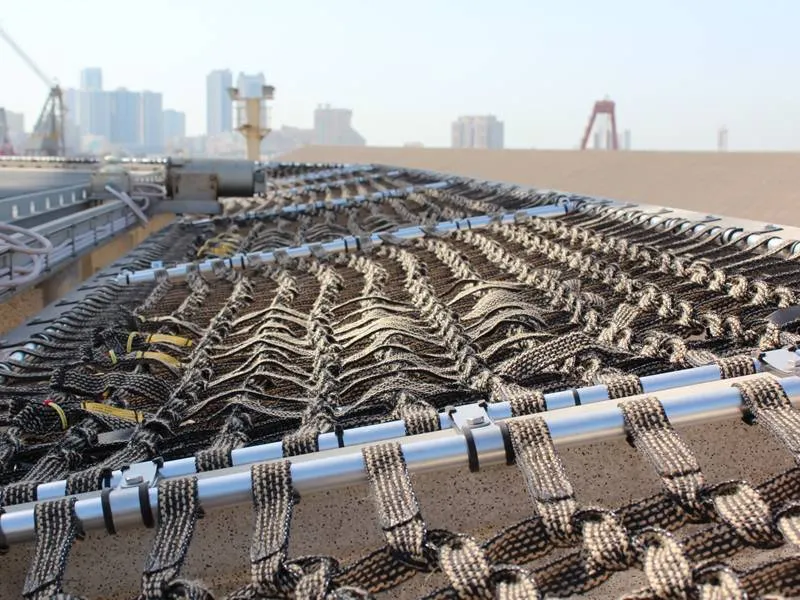- Industrial zone, South of Anping Town, Hengshui, Hebei, China.
- sales@hfpetromesh.com
- +86-18931809706
aluminum grating specifications
Understanding Aluminum Grating Specifications
Aluminum grating is a versatile and lightweight material widely used across various industries, including construction, manufacturing, and transportation. Its specifications are critical in ensuring that the grating meets safety and performance standards required for specific applications. This article will discuss the key aspects of aluminum grating specifications, including material properties, design considerations, and maintenance.
Material Properties
Aluminum grating is primarily made from aluminum alloys, such as 6061-T6 and 6063-T6, known for their excellent strength-to-weight ratio, corrosion resistance, and ease of fabrication. These alloys provide a durable solution for environments exposed to moisture, chemicals, and high traffic. The specifications typically include the alloy type, thickness, and finish, which can vary from mill finish to powder-coated options, enhancing aesthetics and providing additional protection against the elements.
Load-Bearing Capacity
One of the most critical specifications for aluminum grating is its load-bearing capacity, which is determined by several factors, including the grating's design (bar spacing, cross-sectional shapes), thickness, and overall dimensions. Load ratings are categorized into different classes, with each class indicating the type of loads the grating can support, such as pedestrian, vehicular, or heavy equipment loads. It is essential to select a grating type that can withstand the anticipated loads in its intended application to ensure safety and longevity.
Design Considerations
aluminum grating specifications

The design of aluminum grating can vary, with two common types being welded and swaged. Welded grating consists of bars that are welded together at the intersections, providing a robust and stable product, ideal for heavy applications. Swaged grating, on the other hand, is made by deforming the crossbars into a series of indentations on the load-bearing bars. This design offers benefits such as increased surface area for grip and reduced weight. The choice between the two designs will depend on the specific application requirements.
Dimensional Specifications
Dimensional specifications encompass the grating's width, length, thickness, and spacing between load bars. Standard widths usually range from 24 to 48 inches, while lengths can be custom-fabricated based on the project needs. The thickness of the bars typically ranges from 0.125 to 0.5 inches, while the spacing can vary from 1 inch to 2 inches, depending on load requirements and safety standards. It is crucial to adhere to these dimensional specifications for ease of installation and optimal performance.
Maintenance and Lifespan
One of the advantages of aluminum grating is its low maintenance requirement. Regular inspections should be conducted to check for signs of wear, especially in high-traffic areas. If the grating is powder-coated, it will typically require minimal upkeep, while mill finish grating may benefit from occasional cleaning to preserve its appearance. Properly maintained aluminum grating can have a lifespan of several decades.
Conclusion
Understanding aluminum grating specifications is essential for selecting the right product for a particular application. By considering material properties, load-bearing capacities, design options, dimensional specifications, and maintenance requirements, you can ensure that the aluminum grating meets both safety standards and functional needs. Whether used in industrial settings, walkways, or architectural design, aluminum grating provides an effective and durable solution.
-
The Power of Pyramid Shaker Screen - A 3-Dimensional SolutionNewsOct.24,2024
-
Exploring the Versatility and Durability of Steel GratingNewsOct.24,2024
-
Revolutionizing Drilling Efficiency with Steel Frame Shaker Screens for Mud Shale ShakersNewsOct.24,2024
-
Potential of Shale Shaker ScreensNewsOct.24,2024
-
Offshore Pipeline Counterweight Welded Mesh - Reinforced Mesh in Marine EngineeringNewsOct.24,2024
-
Revolutionizing Offshore Pipeline Stability with Concrete Weight Coating MeshNewsOct.24,2024
